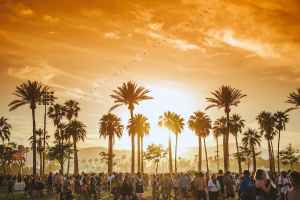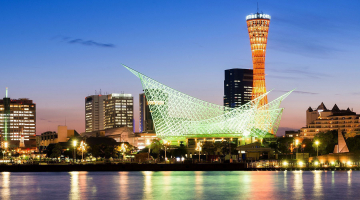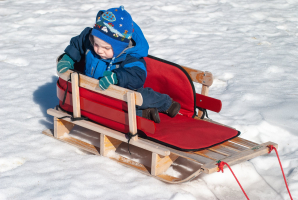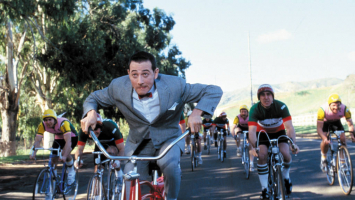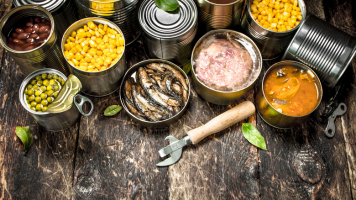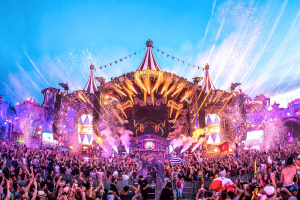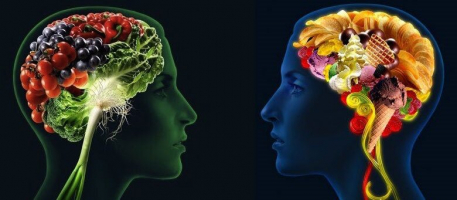Top 15 Best World Festivals for Your 2022 Bucket List
To be honest, touring the world is only as much fun as the thrilling adventures you engage on and the fresh experiences you have when you encounter various ... read more...cultures. Festivals are a good chance to spend time with others while interacting in concrete ways with local culture. Not to mention that it's an exceedingly simple and enjoyable way to spice up your touring plans. Every year, there are a plethora of festivals to select from all around the world, but don't worry, we've got you covered! We've compiled a list of the greatest festivals throughout the world so you can prioritize and begin planning your ideal vacation sooner.
-
Carnevale di Venezia, or Venice Carnival, stretches back to the 11th century but only gained international recognition in the 18th century. Every year, thousands of visitors and residents dress up in stunning costumes and masks to enjoy music, dancing, parties, and the celebratory mood during the weeks dedicated to Carnival.
Live theater productions showcasing interesting and amusing traditional folk characters, sumptuous 18th century-style galas in stunning ancient Venetian buildings, open air street celebrations, and an award ceremony at Carnival's conclusion to reward the finest costumes and masks are all part of the festivities.
Location: Venice, Italy
Time: 40 days before Easter, on Shrove Tuesday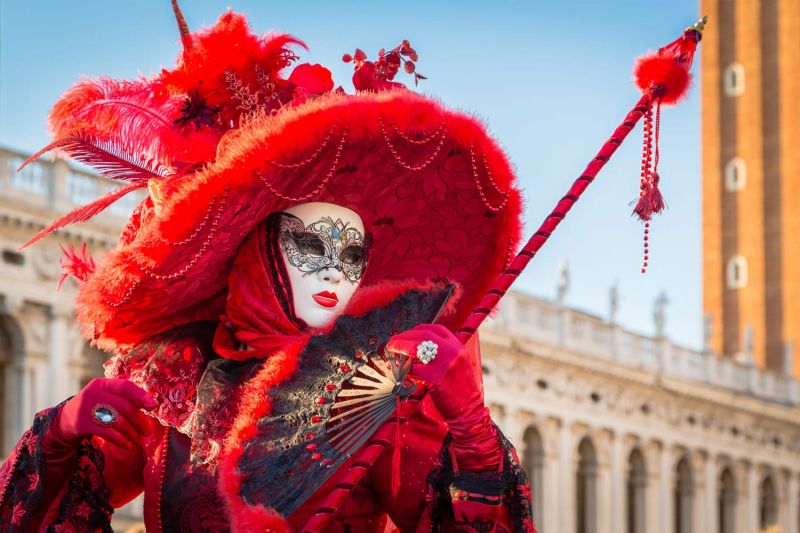
Photo: saveriolafronza / shutterstock.com Video: Venezia Autentica - Discover and Support the Authentic Venice -
Holi is unquestionably one of the world's largest religious celebrations. Holi, also known as the Festival of Colors, is a springtime celebration of good triumphing over evil. The holiday also heralds the end of winter and the joyous anticipation of the forthcoming spring harvest season.
For both locals and tourists, Holi provides an opportunity to play, dance, and sing without a care in the world. On the day following the full moon in March each year, people spend the day spreading lavishly colored powder on strangers, acquaintances, and family, throwing colored water at each other, and dancing beneath water sprinklers. Because Hindu legends about the burning of the demon Holika and its connection to the festivities are heavily emphasized, Holi celebrations begin on the night of the festival with massive bonfires complete with singing and dancing.
Location: India and Nepal
Time: Between the end of February and the middle of March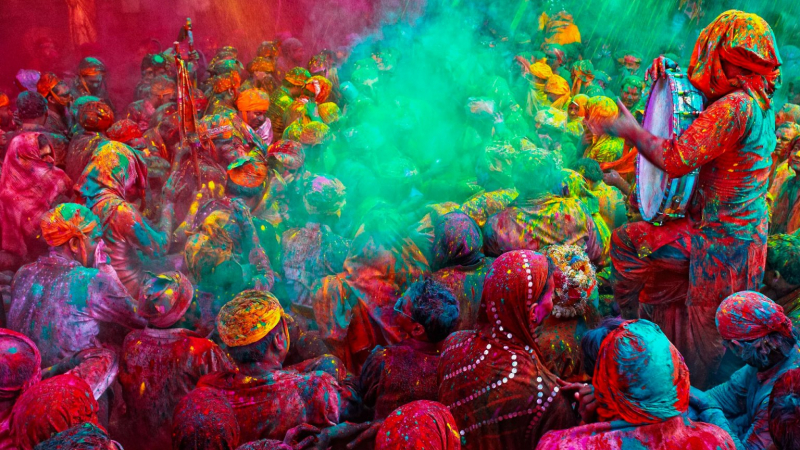
Photo: destinosahora Video: BBC Earth -
There is no other Carnival like Rio's. Indeed, it is nearly difficult to think about Brazil's capital city without considering its Carnaval. Carnival, as presented by Rio de Janeiro, is one of the most exciting and well-attended cultural festivities on the planet. Despite its beginnings in ancient Greek revels celebrating Dionysus, the god of wine, Carnival was subsequently changed by the Romans to worship two of their own gods, and then by the Catholic church to have the festival celebrated directly before the period of Lent.
Rio de Janeiro has gained the title of World Carnival Capital because to its legendary samba dancing, vibrant eye-catching costumes, pulsing music, breathtaking float displays, and explosive atmosphere. Join a samba school (a local samba club) and dance, sing, and have fun at one of the world's biggest festivals.
Location: Rio de Janeiro, Brazil
Time: Begins on Friday and ends on Ash Wednesday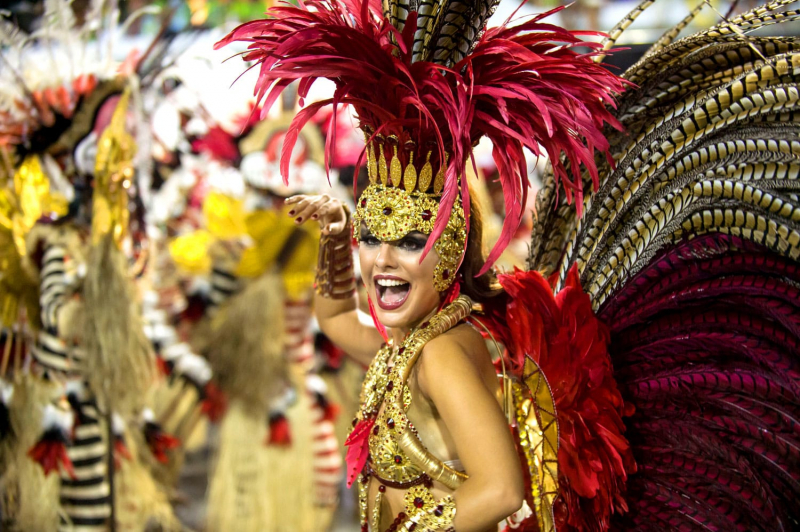
Photo: CP DC Press / shutterstock.com Video: juniorpetjua -
It was first performed in 1998. Boryeong Mud Festival is a relatively new festival held in the South Korean seaside town of Boryeong. It was originally intended to generate publicity for a line of cosmetics made with the area's nutrient-rich mud, but the event swiftly became Korea's most popular summer festival. Boryeong Mud Festival is now simply a terrific excuse to get down and dirty and have a good time.
Every year, festivalgoers go to Daecheon Beach for exciting live music, a dip in the nutrient-rich mud, and the opportunity to sample numerous mud-related health and beauty products and services. Immerse yourself in nutrient-rich mud in the mud pool, slide down the mud slide, or express yourself artistically by body painting with colorful mud, making your own mud soaps, and taking on the mud maze obstacle course.
Location: Rio de Janeiro, Brazil
Time: Begins on Friday and ends on Ash Wednesday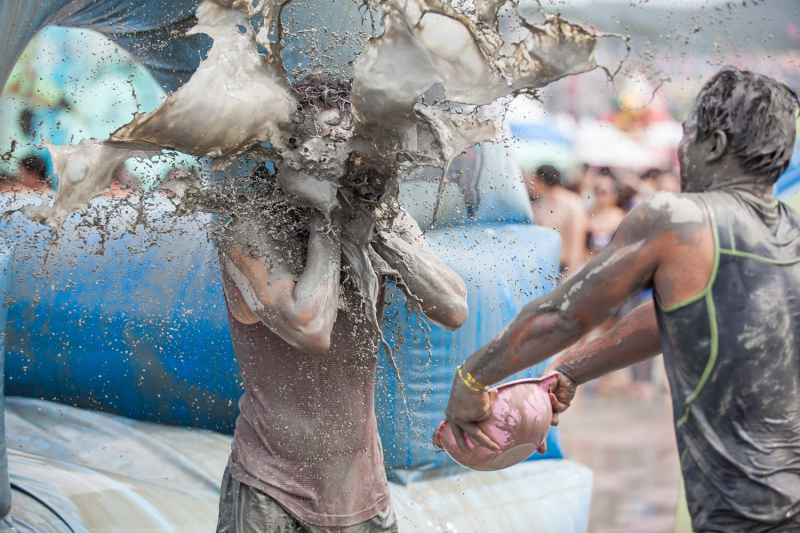
Photo: yochika photographer / shutterstock.com Video: KOREA NOW -
In the year 1810, a German crown prince wedded his princess. The kind royals provided plenty of celebrations for all of Bavaria's residents in Munich to enjoy, and everyone had so much fun that they decided to do it all again the next year and the year after that. As a result, Oktoberfest was founded. And now, most people associate October with chilly weather, pumpkins, and, of course, Oktoberfest.
On average, Oktoberfest attracts 6 million visitors to Munich each year, making it one of Europe's largest festivals and one of the most popular globally. So much so that Oktoberfest festivities have been reproduced in a number of major cities across the United States. Oktoberfest combines parts of a rich local culture, history, fun and games, wonderful food, and amazing beer into a few weeks of spectacular celebration. Head to the Wiesn (fairgrounds) to experience agriculture exhibitions, costume processions, fun fair rides, historical and cultural presentations, all the food you can eat, and, of course, the copious amounts of beer that Oktoberfest is famous for.
Location: Munich, Germany
Time: Mid or late September to the first weekend in October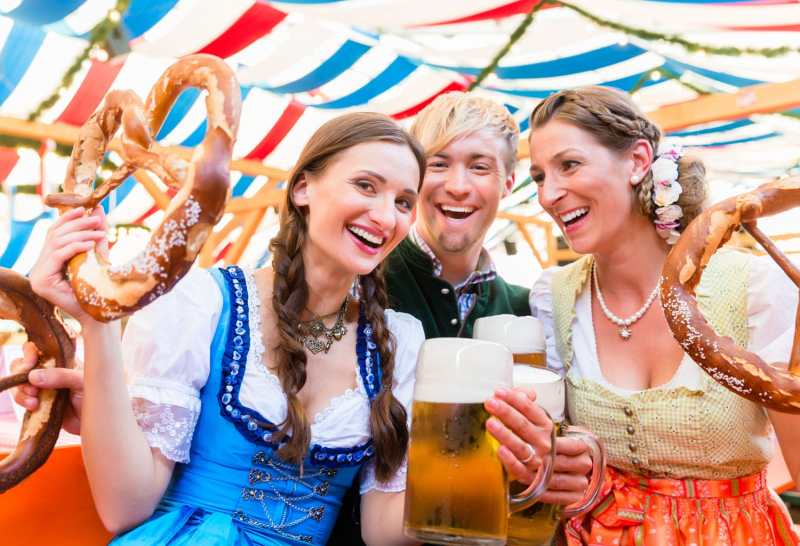
Photo: Kzenon / shutterstock.com Video: High On Life -
Every August, the village of Buol hosts the biggest food fight event, La Tomatina. The genesis myth for La Tomatina has several interpretations, ranging from simple pranks among youngsters to attacks on a terrible musician to residents expressing their wrath and disgust with municipal councilmen.
This friendly battle and offbeat event draws a large crowd. In the past, as many as 50,000 people attended the legendary La Tomatina, but in recent years, a ticket system has been implemented to maintain the number of participants at or below 20,000. The hour-long fight begins with the firing of water cannons, followed by mayhem as over 100 tons of overripe tomatoes are squished and tossed all over the place.
Location: Buñol, Spain
Time: Last Wednesday of August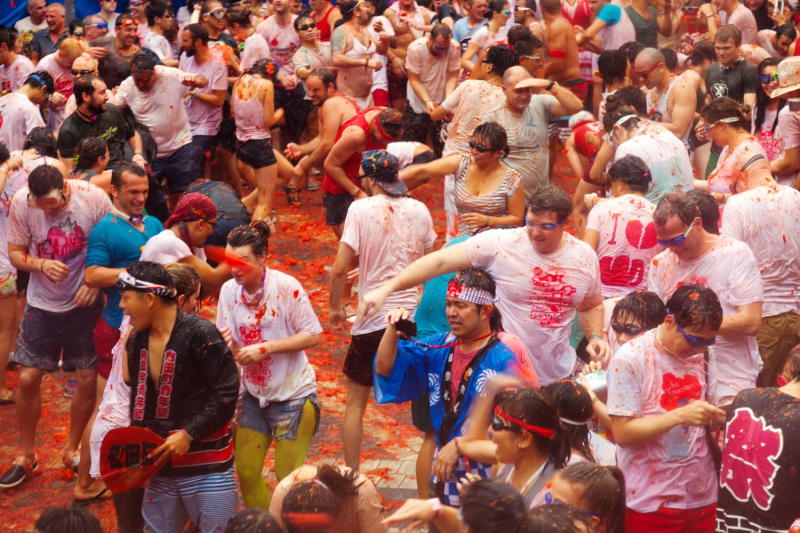
Photo: Iakov Filimonov / shutterstock.com Video: World Nomads -
The Albuquerque International Balloon Fiesta is the largest international event hosted in the United States each year. For almost four decades, the first or second week of October has heralded the spectacular moving picture show of multicolored hot air balloons drifting through the cool autumn air.
From its humble origins in the 1970s in a mall parking lot with only 15 hot air balloons, the Balloon Fiesta has progressively evolved to become the world's largest ballooning festival. The Albuquerque International Balloon Fiesta is one of the most photographed events on the planet, with almost 600 brightly colored balloons launched each year. Laser light shows, pyrotechnics, live band performances, and interactive education round out the charm of Balloon Fiesta and ensure that there is something for everyone to do or see.
Location: Albuquerque, USA
Time: Early October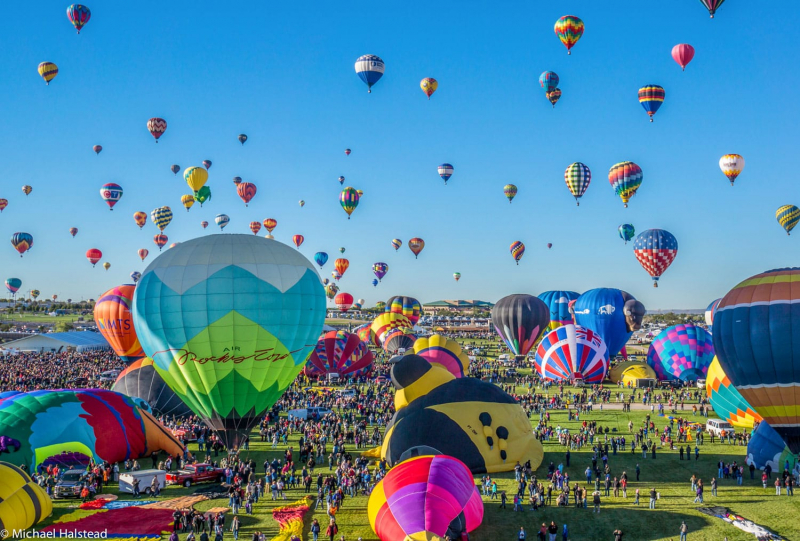
Photo: Michael E Halstead / shutterstock.com Video: Albuquerque International Balloon Fiesta -
With its unique combination of old indigenous and European Catholic customs, Da de los Muertos, or "Day of the Dead," easily outshines even the most vivid Halloween celebrations.
Mexicans honor their dearly departed by erecting beautiful altars, preparing and decorating special bread called pan de muerto, organizing and attending costume parties, visiting friends and giving presents at altars, crafting colorful sand tapestries, and lighting candles to pay tribute to the deceased.
Día de los Muertos is one of the major festivals of the year in the southern Mexican city of Oaxaca, with the main events taking place between October 31 and November 2 and a series of ancillary activities preceding and indicating the conclusion of the festivities.
Día de los Muertos is more than just a frightening holiday; it is a wonderful celebration of life and death. The majority of Mexicans visit cemeteries and tombs to pay their respects to deceased relatives and friends, while kiosks offering sweets and delicacies, as well as carnival rides, are put up on the grounds of the largest cemeteries.
Location: Mexico
Time: October 31 – November 2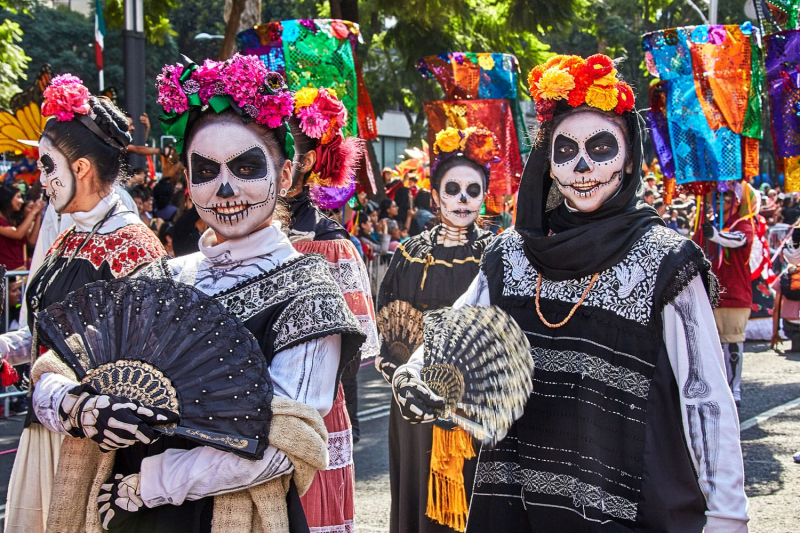
Photo: Dina Julayeva / shutterstock.com Video: Beautiful Destinations -
Thailand's Songkran Water Festival, conducted in April to commemorate the traditional New Year, is held throughout the country. However, Chiang Mai's Songkran celebrations are legendary and should not be missed; after all, it is Thailand's most anticipated festival.
For Thai people, sprinkling water has long represented blessing, purification, and newness. Persons of all ages come out equipped with super soakers or buckets of water, ready to drench strangers and friends alike in this modern spin on old school beliefs.
Bubbles, professional dancer performances, religious processions, and other enjoyable methods to keep cool are among the festivities.
Location: Thailand
Time: April 13 – 15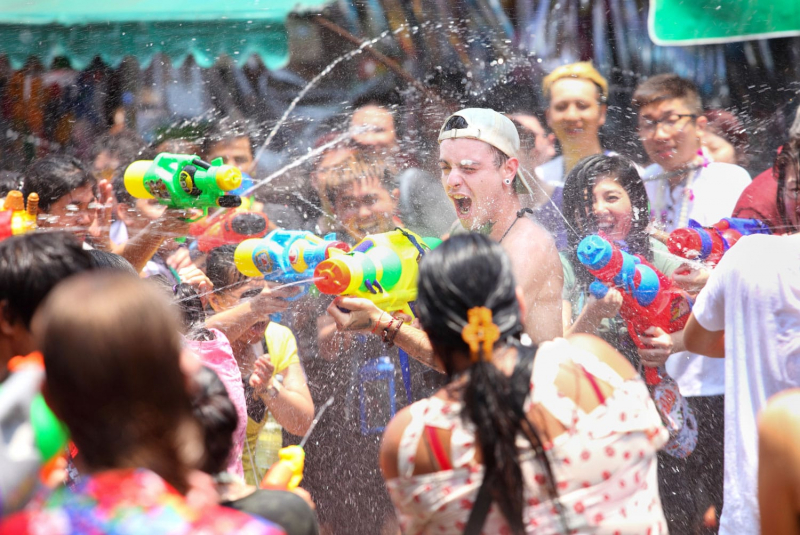
Photo: NattapolStudiO / shutterstock.com Video: TheLifeOfJord -
Despite its sinister name and the aura of mystery that surrounds it, Burning Man is one of the most popular festivals in the United States. Burning Man is held at Black Rock City, Black Rock Desert, Nevada, in a full-fledged, functioning temporary metropolis built specifically for the festival.
Festivalgoers soak in the last of the summer sun while enjoying art and community, with a focus on ideals such as communal collaboration, participation, self-expression, and de-commodification.
The community at Burning Man explores different types of creative self-expression, with guests encouraged to generously offer their abilities through experimental or interactive sculptures, performance art, and other mediums in line with the festival's premise. Burning Man is not your average festival. Almost everything that happens in Black Rock City is created and affected solely by its people, who are active participants in the experience.
Location: Black Rock City, Nevada
Time: Last Sunday in August to the first Monday in September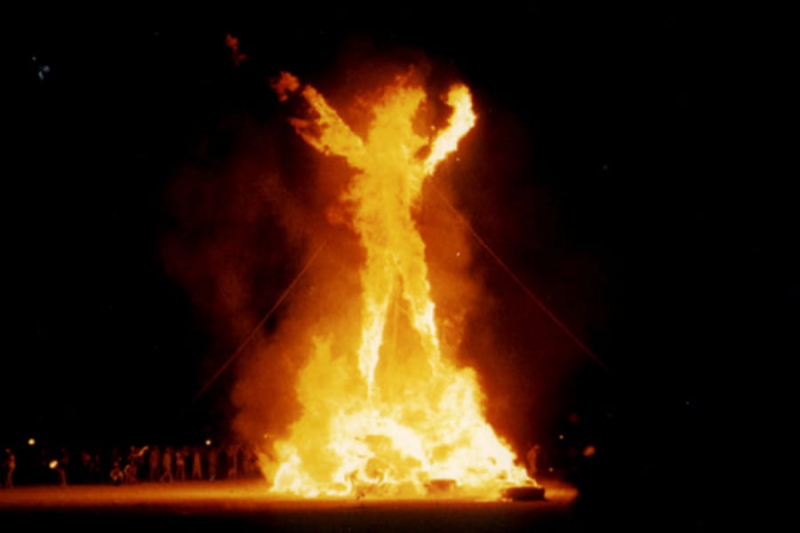
Photo: Aaron Logan / flickr (CC BY 2.0) Video: Lorraine -
Yi Peng is an annual celebration in Northern Thailand held in the second lunar month of the year as part of the festival of lights. Yi Peng is celebrated throughout Thailand, but Chiang Mai celebrates the greatest Yi Peng Festival, with spectacular displays topped off with cultural events and fireworks you won't want to miss.
Locals' houses and public spaces are decorated with colorful hanging lanterns and flag decorations during Yi Peng. A parade, live music and dance displays, handicraft activities, and the release of lanterns into the night sky are among the festivities.
For the villagers, releasing lanterns represents more than simply a gorgeous display of floating lights. It is widely held that releasing lanterns represents letting go of previous misfortunes and making a fresh start.
Find a rooftop bar or other vantage point to observe the sky lanterns, or join the crowds on the ground expressing wishes as they release their own lanterns.
Location: Chiang Mai, Thailand
Time: Full moon of the twelfth lunar month (typically Mid-November)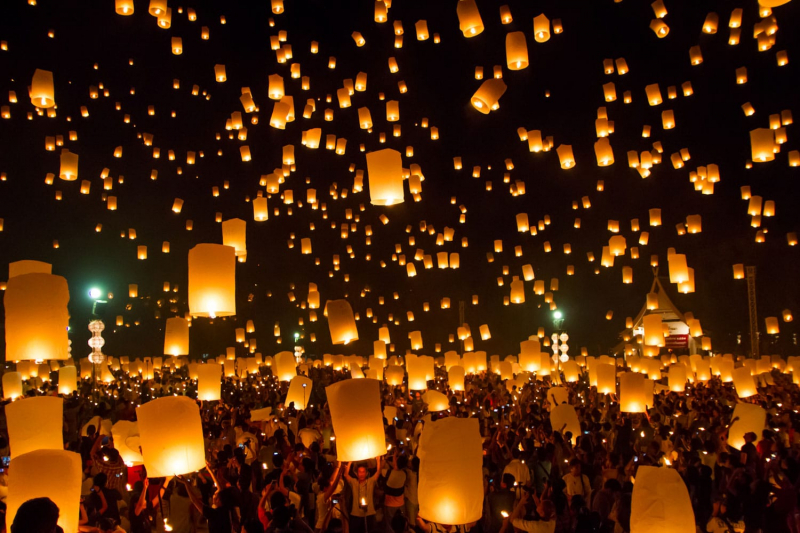
Photo: Tanachot Srijam / shutterstock.com Video: Practical Travel -
The Harbin Ice and Snow Festival is an annual thematic winter festival held in Harbin, China, and is the world's largest ice and snow festival. Every year, the Harbin Ice and Snow Festival transports tourists to a whole new wintry realm of ice and snow. The city's northeastern position in China provides for naturally plentiful ice and snow, earning it the moniker "Ice City."
Harbin is not only known as China's ice capital, but it is also known for its extraordinarily beautiful ice and snow sculptures. The Ice Lantern Festival precedes the Ice and Snow Festival. Nonetheless, the Ice and Snow Festival remains the country's most popular ice event, as well as one of the top winter events in the world.
Location: Harbin, China
Time: January – February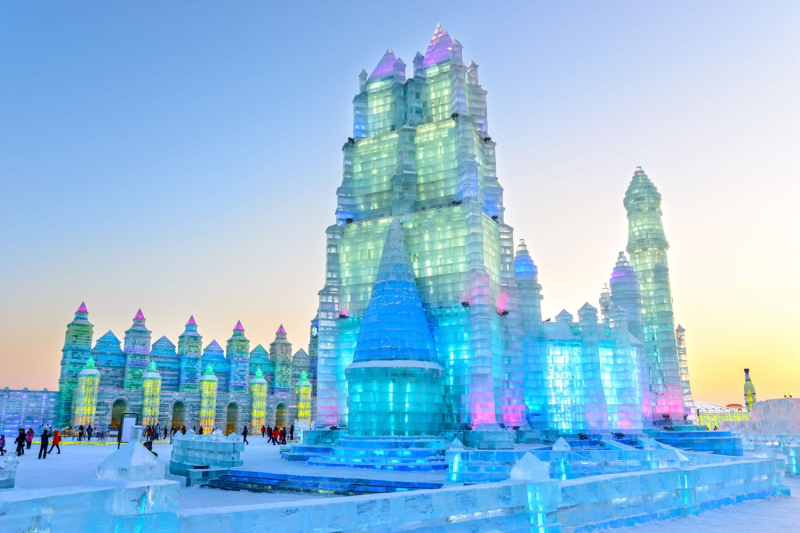
Photo: aphotostory / shutterstock.com Video: LEDRED production -
Saint Patrick's Day is an annual cultural and religious event observed on March 17th to commemorate the death anniversary of Ireland's patron saint, Saint Patrick. The holiday also marks the introduction of Christianity in Ireland and is a celebration of all things Irish.
Since 1996, a full festival of parades, fireworks, and general merriment has enveloped the St. Patrick's Day celebration on March 17th. Celebrate Irish heritage and culture by enjoying traditional song and dancing, seeing musical street theater acts, drinking some beer, and dressing up in all green. Different towns and cities have their own distinctive and spectacular street parades and festivals, but St. Patrick's Day in Dublin is the most popular.
Location: Ireland (and many other places in the world)
Time: March 17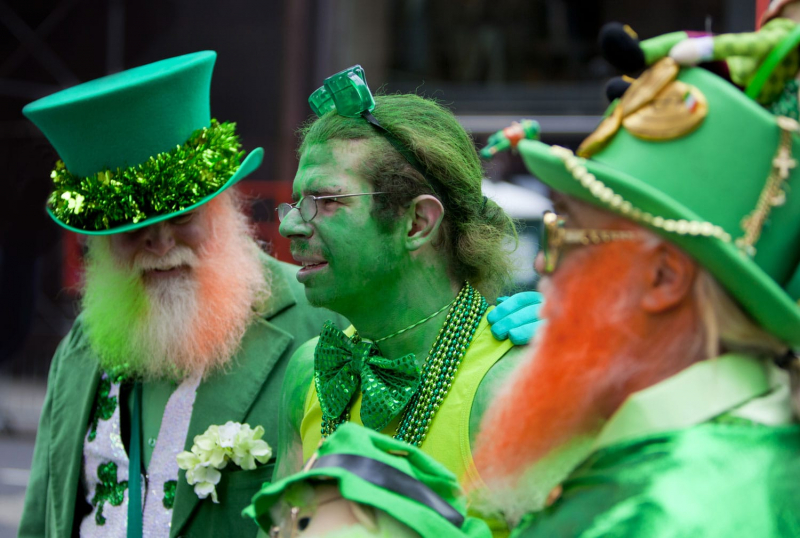
Photo: Stuart Monk / shutterstock.com Video: English Portal -
The Spanish arrived in Guatemala in 1524, bringing with them the custom of Semana Santa (Holy Week) to the Latin American country's coastlines. Centuries later, the practice continues, with Guatemala presenting one of the most extravagant Holy Week celebrations in the world.
Thousands of people go to the streets to celebrate the spiritual and cultural with lavish floats, carefully crafted carpets, massive religious processions, and bright, extravagant religious displays. Semana Santa combines Spanish history, Catholic religion, and indigenous cultural beliefs to produce possibly Guatemala's most anticipated week of celebration.
Holy Week is the week preceding Easter Sunday, celebrating the crucifixion and resurrection of Jesus Christ, and is marked with street manifestations of faith in the shape of many processions, each with its own float.
Location: Antigua, Guatemala
Time: Holy Week (the week leading up to Easter Sunday)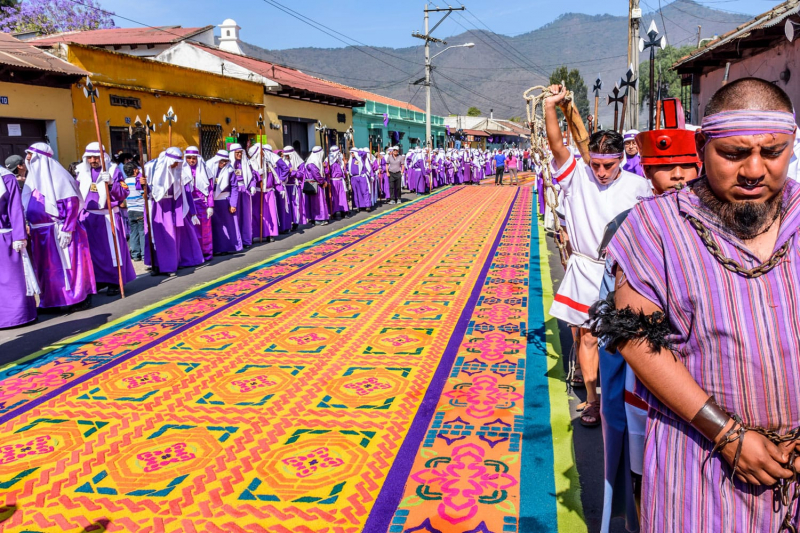
Photo: oca4motion / shutterstock.com Video: Ministerio de Cultura y Deportes de Guatemala -
Krampus is coming to town, so keep an eye out and don't pout! When it comes to the Krampus Parade or Festival, Christmas meets a horrific twist on Halloween. In Alpine legend, Krampus is depicted as the horned Christmas demon who brutally punishes or even kidnaps mischievous youngsters.
Krampus, the antithesis of cheery old Saint Nick, is portrayed as a terrible half-goat half-demon, and stories of his brutality at Christmastime vary depending on who recounts them. Realistic costumes are made in certain Alpine towns so Krampus may go knocking on doors and going down the street to'scare' or 'punish' unruly children. These Krampuslauf (Krampus Run) activities take place throughout December till Christmas.
Location: Austria
Time: Late November until Christmas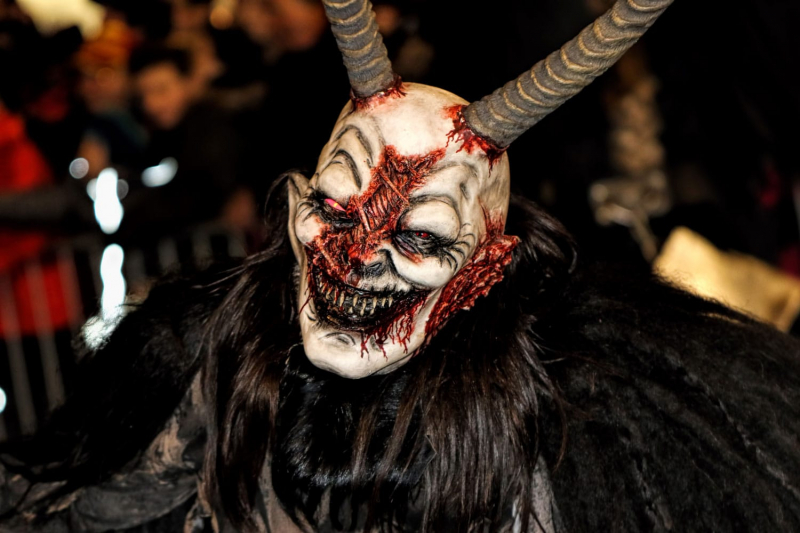
Photo: Tiberiu Stan / shutterstock.com Video: the deepest darkest goth of whitby


















